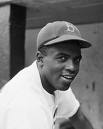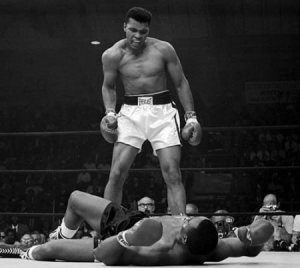In a previous post I talked briefly about how I want to focus on the “racial atmosphere” (for lack of a better term) and civil rights action affected and was affected by different sectors of American society for my individual project. Last time I talked about Berry Gordy and Motown. Today I turn to America’s pastime…baseball.
Baseball presents a natural way to investigate and analyze the role racism has played in American society. At the American Bar Association’s Forum on the Entertainment and Sports Industries (yup they have those), there was an interesting article presented by Clark Griffith on the role of Jackie Robinson. In this, Griffith makes several interesting points. He points out how baseball shows the progression of civil rights action from Plessey to Brown (this focus makes sense since this is an ABA forum). After Plessey, baseball had a separate but equal mindset during the beginning to mid 20th century that reflected that attitude of the rest of American society. There were separate leagues for whites and blacks. They often used the same stadiums, but not at the same time. They attracted huge crowds, since it was after all, America’s pastime.
However, this all changed when, in 1947, Jackie Robinson was signed to the Dodgers, a white team. Clark argues that this was the quintessential moment in American society that signaled the change from Plessey to Brown. He says, “it was baseball that broke the color barrier in America.” He points out that the armed forces were integrated shortly after and the Brown v. Board of Education decision followed within the next decade.
I think his points are interesting and worth considering. However, I am not convinced that the Dodgers signing Robinson created the Civil Rights Movement. Rather, the country was already headed that way.It was most definitely influential, because it is something that everyone would know about. However, I don’t know if there can be ONE quintessential moment in the Civil Rights movement. If you asked random people, I think you would get many different answers: Rosa Parks refusal to move on the bus, March on Washington, “I have a Dream” speech, abolition of slavery, Brown v. Board, some may say the election of Barrack Obama as president, etc. The list could go on and on. That is why I think this lesson plan is important. It attempts to show the many different ways that racism affected American society and how those barriers were broken down in sectors that aren’t usually covered in a classroom.
This is why I want to discuss the relationship between sports and the Civil Rights Movement. Baseball is definitely a natural avenue to analyze this relationship (and ,as a baseball fan, an enjoyable one); however, it is not the only one. I could just as easily discuss Muhammad Ali’s relationship with Malcolm X and how he threw his Olympic gold medal into the river after being denied service.
Or John B. McLendon’s fight for racial equality in the basketball world and as the first black coach at a predominately white university. This theme can be found in many different ways throughout the world of sports.
By incorporating sports into the lesson, I will be including another interest of many of the students. So, it is another way to get the students interested in the topic. I think it is again a matter of thinking of your audience. In my case, it is teenagers. What are their interests outside of the classroom? If I can incorporate these interests inside the classroom then they will be more likely to be interested and involved, which makes my job much easier and enjoyable.



